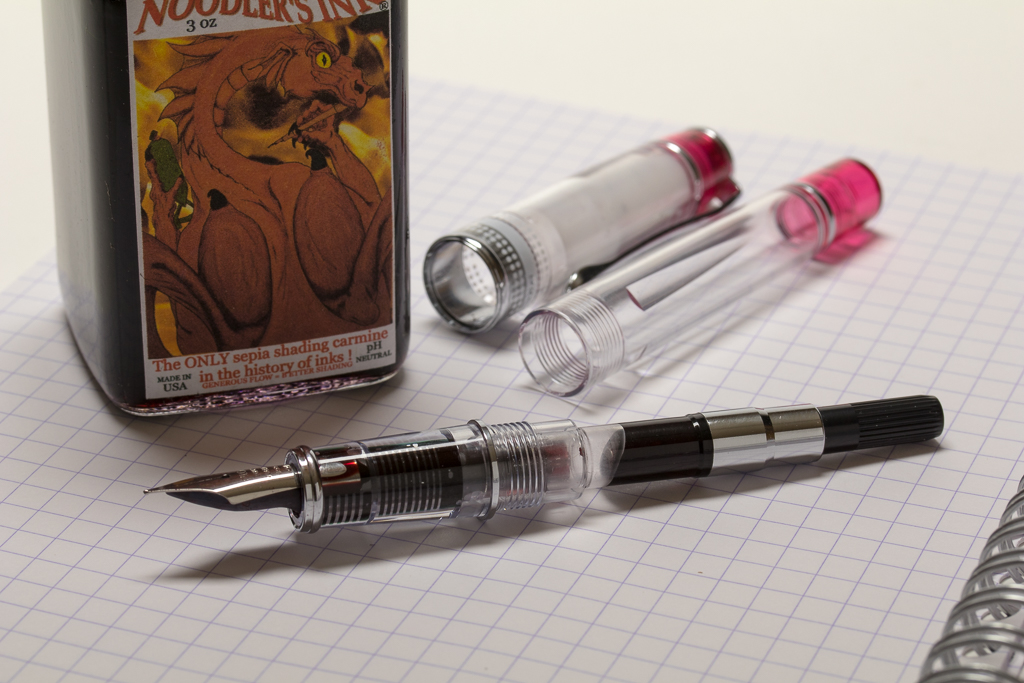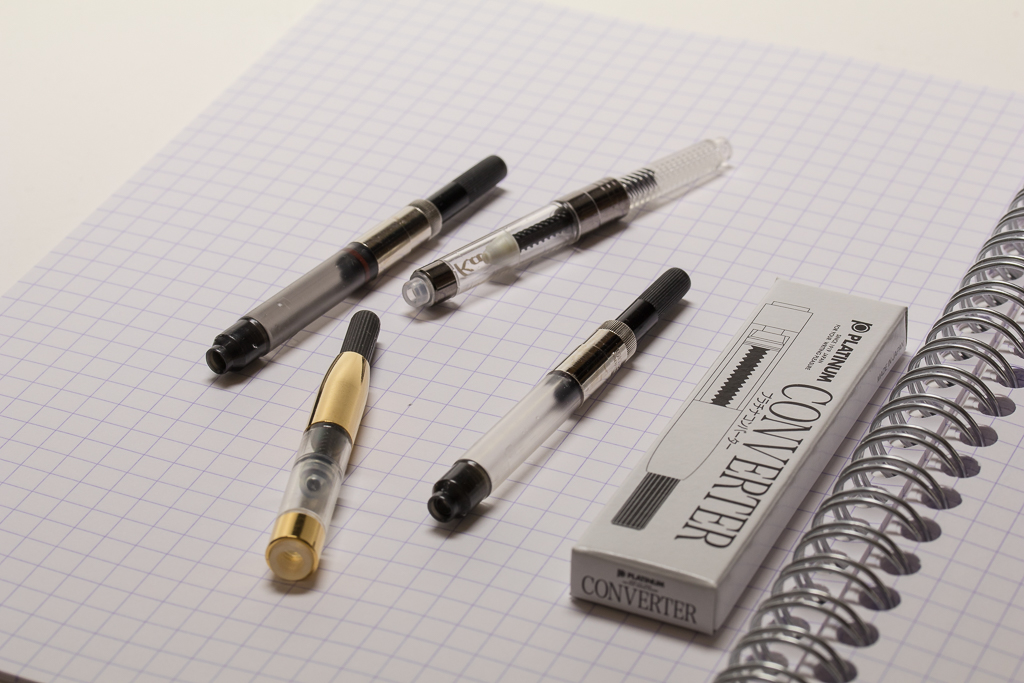
The one thing that ball point pens, roller balls and even pencils have in common is that they come conveniently pre-loaded with ink (or lead). Fountain pens usually do not. You open the box and take the gleaming barrel out. Then wonder how to fill and use your beautiful new pen. You might receive a starter cartridge, pre-filled with ink. Or perhaps you have a piston converter.
Higher end pens such as Staedtler, Parker Sonnet, Pilot Capless and Prera are sold pre-fitted with converters. You can also purchase a converter separately for most other pens.
Converters can be somewhat of a mystery and you might not be sure if you are using them correctly. Perhaps you are new to fountain pens. Ink gets everywhere when you try to fill it or there is a huge air bubble in the converter after it's filled.
By far the most common type of converter is the screw or piston converter. This converter works thanks to a plunger that is screwed down, then up to create suction. The suction created on an upward pull causes ink to be drawn into the converter.
Most manufacturers supply some form of piston converter which is either a proprietary fit, or matches international standards allowing the converter to be put in any pen that accepts international fittings. You will also find that converters are generally not glued into place, giving you the option to use a cartridge for ink delivery if you wish.

How to fill a piston converter
A fountain pen converter is normally filled after it is attached to the pen. With a little practise you'll soon find that filling a converter is a breeze. Here are the steps:
Step 1: Make sure you have some handy kitchen towel ready to clean up any inky mess!
Step 2: Screw the plunger up so that it is at the top of the converter, away from the nib.
Step 3: Insert the nib and nib section (front of the pen) into your ink bottle. Make sure the nib and just a little of the nib section is fully submerged in the ink. Screw the plunger down and squeeze the air out. You'll see bubbles!
Step 4: Keeping the nib submerged, screw the plunger so that it moves upward and toward the top of the converter. You should see the converter filling with ink because of the suction that is created.
Step 5: If you don't see ink filling the converter or you may be allowing air to enter the converter, keep the nib of the pen submerged and start again from step 2. You may need to do this a couple of times to get the converter fully loaded with ink!
Step 6: Remove the nib and section from the bottle and clean off any excess ink with your kitchen towel.
Step 7: Put your pen back together and enjoy!

Got filling problems?
Before you start to hate your converter and wish you had never picked up a fountain pen, we'll address a few common problems that you may have during the filling process:
No suction. The converter just won't fill, no matter what!
In order to fill the converter, you pen nib must be fully immersed in the ink bottle so there is no possibility of air entering the system. The front part of the nib section should be immersed in the ink by just a touch. If there is any way for air to get into the system then suction will not be your friend and your pen will not fill. Obviously the level of ink goes down as you suck, so make sure your nib and nib section is immersed enough.
Mess! Ink gets everywhere!
It can! And that's part of the fun! But fear not – as you practise you'll find you naturally make less mess and the filling procedure becomes quicker and easier.
The converter won't fill all the way.
It's common to have a little air in the converter after filling. You can get rid of this by following step 5 above!
The ink level in the bottle is too shallow to fill the pen.
Some ink bottles are a marvel of design. Have you ever wondered why Waterman of Paris has such interesting shaped triangular bottles? It's so you can balance them at a 45 degree angle when the ink level goes down, creating a deeper well. If you find trouble getting ink into your pen because the nib and front section are large, then you can try filling the converter without it being attached to the nib. Some people actually prefer to fill a pen this way. Give it a whirl. Don't worry about the ink leaking out of the converter - it shouldn't happen thanks to the marvel of surface tension.
Once you are adept with the piston converter, filling other converter types should be easy. Just like anything that seems a bit tricky to master at first, it's actually very easy and convenient to fill a piston converter. A world of wonderful ink awaits you!